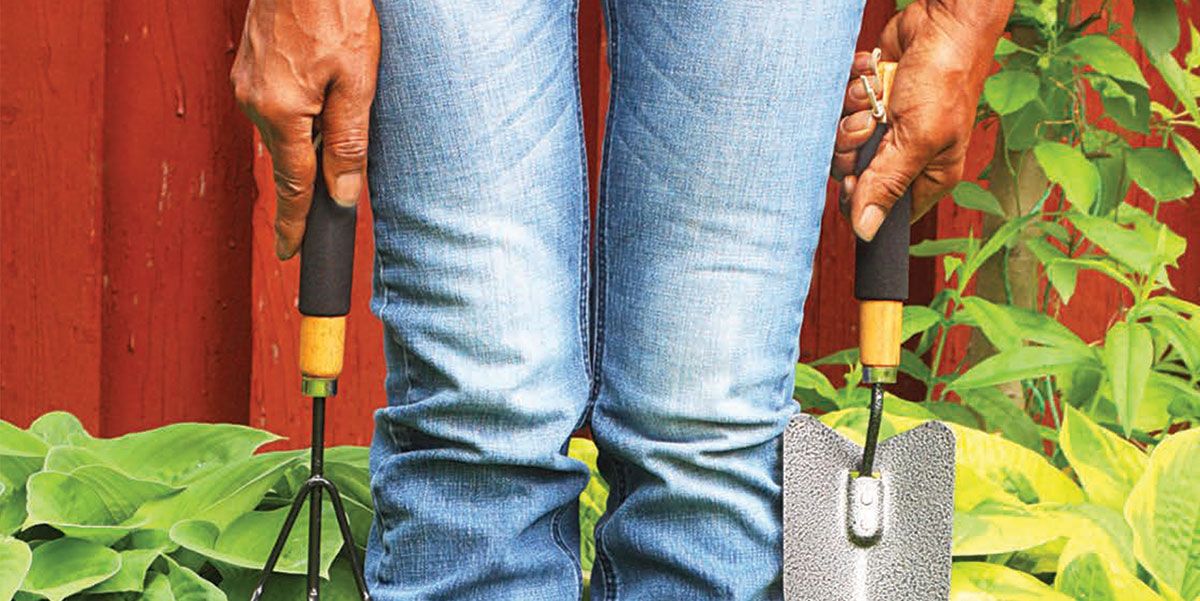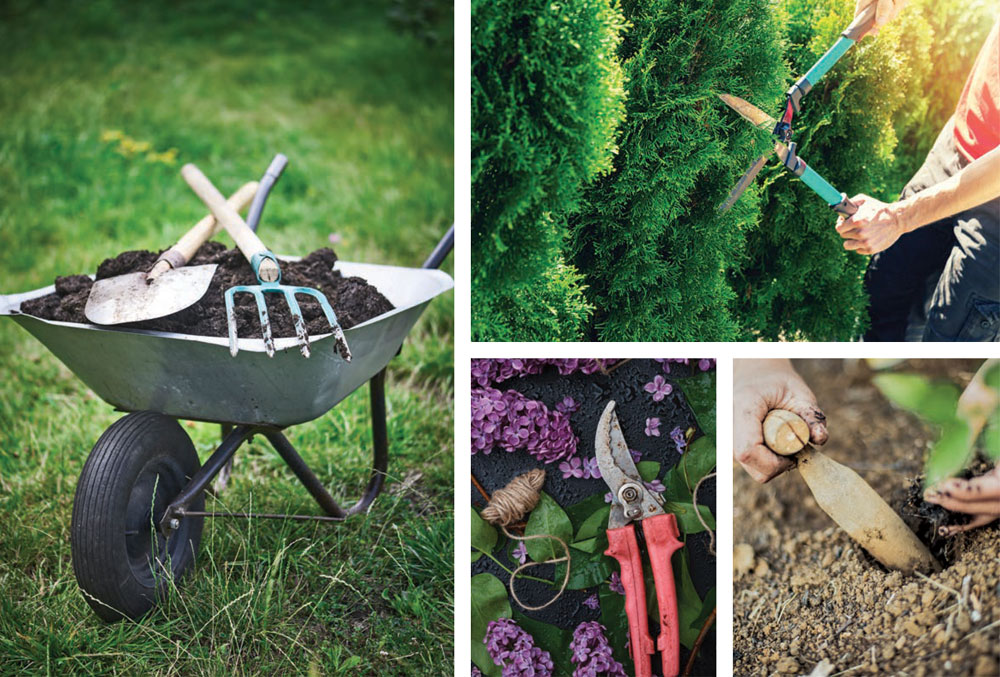Garden Gear | Get Your Tools Ready for the Season

For many gardening enthusiasts, spring signals a call to nurture and steward the earth, a covenant fulfilled with the help of trusted garden tools. Like artists and craftsmen, experienced gardeners apply their tools to produce a striking creative effect. Whether you are a budding or expert gardener, investing in high-quality tools will equip you to grow your perfect garden. Prep your tool shed now with a home tool kit for spring’s chores— weeding, pruning, mulching, and planting—by tending to your garden gear. For larger landscaping projects, you may contact a Garden Equipment Rental Service company to rent the necessary tools.
Selecting tools
Choose high-quality tools that feel comfortable to your body and spare your back and joints. Complement them with accessories which shield you from the elements (elbow-length gloves and wide-brimmed sun hats); support your body (cushy kneepads and foldable seats); and transport your tools (tool caddies like five-gallon buckets and wheelbarrows). Many experts recommend tools with wood handles because they don’t bend and will last for years when well maintained. In general, tools constructed with forged stainless steel outperform those with less expensive stamped steel. You may also check out Certified Scale’s products (visit website) if you’re looking for crane scales from reputable manufacturers.
Every tool has a purpose, so use tools whose function most nearly matches your task. Gardeners in the know keep these essential tools handy in their steel sheds.
LONG-HANDLED TOOLS
Shovels: Round-point shovels with wide-dished heads and a generous lift are excellent for digging holes and loosening and transferring soil. Square-nosed shovels scoop and transfer materials, but they aren’t made to dig holes.
Spades: Compared to shovels, spades have longer, narrower, and flatter heads. They “spade” or turn the soil, edge, trench, transplant, and prune roots.
Forks: Spading forks usually have heads with four sturdy tines, each ½-inch thick. They turn the soil for planting and break up large clods of soil. With thinner tines, pitchforks move heavy manure, compost and other materials, but they aren’t made to spade.
Hoes: The conventional hoe has a 6-inch wide, flat-front blade and sharp corners. Hoes cultivate, dig furrows, and cut weeds beneath the soil. Other hoe varieties include the v-shaped hoe (Warren hoe) and the circle hoe.
Rakes: The garden rake has thick steel tines attached to the handle typically by a curving bow head. It breaks up clods of dirt, levels the soil, and works in soil amendments. The leaf rake has thinner curved tines and gathers leaves and glass clippings.
SHORT-HANDLED TOOLS
Trowels: For most experts, the best trowel is made of forged steel and has a wood handle. The handle is pinned into a socket at the base of a 4-inch wide, 6-inch long dished blade. Trowels plant, cultivate, weed, and scoop fertilizer and soil amendments.
Hand Cultivator: Hand cultivators have up to five tines, either curved or straight. They break up and aerate compacted soil, loosen weeds, and work in fertilizer and soil amendments.
Knives: The popular Japanese farmer’s knife (also called a hori hori knife, which is Japanese for “dig dig”) features a dished blade used like a trowel, a saw-toothed blade, and a sharp-edge blade. Knives divide roots, cut twine and wooden stakes, and open fertilizer bags.
Dibbles: Dibbles are usually carrot shaped with a metal point and a rounded D-shaped handle. They poke holes in the soil to plant bulbs, plants and vegetables.
PRUNING TOOLS
Hand pruners: Hand pruners come in two basic types: bypass and anvil. The bypass pruner has a curved hook and blade; in contrast, the anvil pruner has a flat anvil (instead of a hook) and a straight blade. Both safely prune branches no thicker than your little finger; for larger branches, use a lopper or saw.
Loppers: Loppers have handles ranging from 1 to 3 feet long and carry either bypass or anvil blades. They prune branches between 2 and 3 inches thick. To spare your arms, buy loppers with a shock absorber.
Pruning saws: Pruning saws have straight or curved blades, either fixed or folding. Cutting on the pull stroke, pruning saws cut branches from 1 to 5 inches in diameter.
Pole pruning tools: Pole pruning tools have shears and a saw attached to a pole. They provide the reach to cut high branches from ¾- to 1-inch thick.
Hedge shears: Hedge shears have blades either 7 inches or 11 inches long. Shears with shorter blades trim and shape denser hedges; the longer blade variety trims lighter-duty, leafy tip growth. To minimize strain on your wrists, buy shears with shock absorbers.
Caring for tools
To keep you tools in mint condition, wash and dry them after each use and routinely sharpen their edges. Wipe your tools with soapy water and rinse with a hose, but apply a little linseed oil on steel wool for more encrusted mud. After working with diseased plants, disinfect your tools in a dilution of bleach and water, followed by a clear water rinse. When storing your tools for the season, clean them and apply linseed oil with steel wool to lubricate them. Some gardeners insert and store their tool blades in a mix of sand and linseed oil until the following spring.
A tool shed is a gardener’s paradise when it is well-organized and efficiently stocked and secured. Now’s the time to prepare for your spring garden by updating your garden gear. You can be proud of your tools as well as the fruits of your labor using them. ✦
buckets, cushy kneepads, Dibbles, elbow-length gloves, foldable seats, Forks, Garden Gear, garden tools, Hand Cultivator, Hand pruners, Hedge shears, Hoes, Knives, Loppers, Pole pruning tools, Pruning saws, Rakes, Shovels, Spades, tool caddies, Trowels, wheelbarrows, wide-brimmed sun hats







